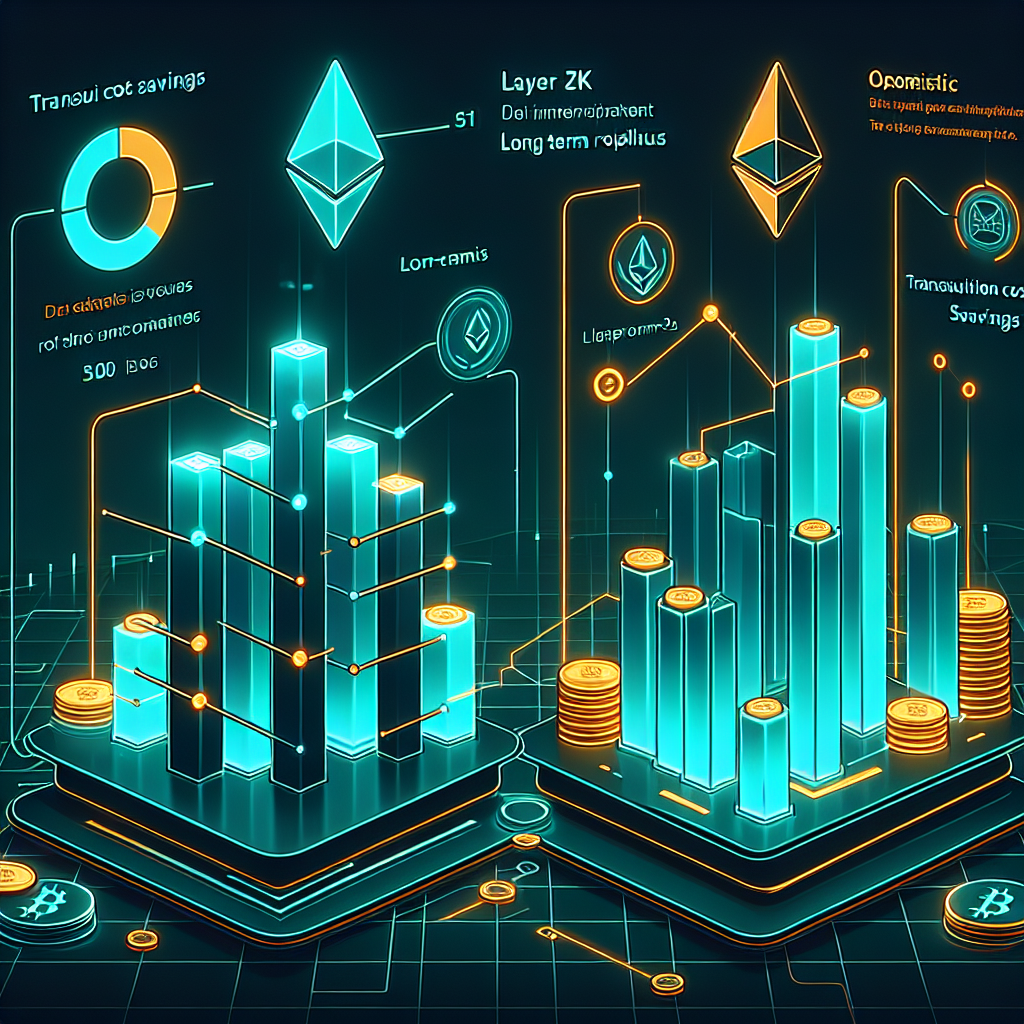Ethereum Layer-2 Rollups: ZK vs Optimistic Designs, Transaction Cost Savings, and Long-Term Investment Outlook

Introduction
Ethereum’s meteoric rise in decentralized finance, NFTs, and gaming has congested the mainnet, pushing gas fees beyond reach for everyday users. Layer-2 rollups now headline the scaling roadmap, aggregating transactions off-chain and writing compressed proofs on-chain. Two architectures dominate conversation: Optimistic rollups and Zero-Knowledge (ZK) rollups. Each promises cheaper transactions, higher throughput, and uncompromised security, yet they differ in design trade-offs, time to finality, and long-term economics. Understanding those nuances is essential for developers, investors, and anyone tracking Ethereum’s evolution.
How Layer-2 Rollups Work
Rollups function as smart contracts anchored to Ethereum but execute computation elsewhere. Users send transactions to a sequencer that orders them and produces a new state root. Instead of publishing every calldata byte, the rollup posts a succinct representation plus either a fraud-proof window or a cryptographic validity proof. Because Ethereum nodes need only verify the proof, not re-compute each operation, the system inherits L1 security while slashing gas usage by an order of magnitude. Scalability is achieved without compromising decentralization.
Optimistic Rollups
Optimistic rollups, used by Arbitrum, Optimism, and Base, assume transactions are valid unless proven otherwise. After a bundle is submitted, observers have a challenge period—typically seven days—to detect and prove fraud. If a fault is found, the malicious sequencer is slashed and the state reverts. The design avoids heavy cryptography, making development simpler and computation cheap. Drawbacks include delayed withdrawals, reliance on at least one honest watcher, and larger on-chain data footprints that can inflate fees when ETH prices spike.
ZK Rollups
ZK rollups, exemplified by zkSync Era, Starknet, Scroll, and Polygon zkEVM, attach a zero-knowledge succinct proof to every batch. The proof mathematically guarantees the new state, so Ethereum can finalize transactions within minutes or even seconds without a contest window. Users enjoy near-instant withdrawals and stronger security assumptions, making the model ideal for trading, gaming, and enterprise settlements. The trade-off is complexity: generating proofs demands specialized hardware and talent, pushing up short-term costs although Moore’s Law continually lowers barriers.
Transaction Cost Savings
Rollups typically cut gas fees by 90% or more because they split fixed data costs across thousands of users. A Uniswap swap that costs twenty dollars on mainnet might run for less than one dollar on Arbitrum or a few cents on zkSync. Upcoming Ethereum upgrades such as EIP-4844 will introduce cheaper ‘blob’ storage, lowering fees further. As compression techniques improve and competition intensifies, average transaction costs on both Optimistic and ZK rollups are projected to approach fractions of a cent.
Security and Finality
Both rollup types inherit Ethereum’s data availability guarantees, but their threat models diverge. Optimistic systems rely on economic incentives and vigilant validators; a dormant watchdog could allow invalid state transitions until challenged. ZK rollups outsource trust to math: if the proof verifies, the batch is correct. Consequently, ZK rollups reach economic finality almost immediately, while Optimistic rollups finalize after the challenge window. For high-value transfers, this difference can influence user preference, institutional adoption, and overall network reputation.
Developer and User Experience
Optimistic rollups today offer near seamless EVM equivalence; developers redeploy Solidity contracts without rewriting code, and tooling like Hardhat works natively. User onboarding is equally smooth, involving familiar MetaMask flows and token bridges. ZK rollups are closing the gap through zkEVM technology, but circuit debugging and prover management still add friction. For end users, the biggest hurdle on Optimistic chains is withdrawal time, while on ZK chains it is wallet support. Ongoing upgrades and account abstraction aim to erase both pain points.
Adoption Metrics
Total value locked on rollups has surged past ten billion dollars, reflecting growing confidence from DeFi protocols, NFT marketplaces, and gaming studios. Arbitrum currently leads by TVL, but zkSync and Starknet show faster week-over-week growth. Daily active addresses on Layer-2 regularly surpass those on some Layer-1 competitors, proving that users prioritize cost savings over new base chains. The next catalyst is mainstream exchange integration, which will enable direct deposits and withdrawals to rollups, bypassing L1 entirely and further solidifying user momentum.
Investment Outlook
From an investor’s standpoint, rollups can capture value through native tokens, sequencer fees, and ecosystem growth. Optimistic rollups may reach profitability sooner given their lower operational overhead, but ZK rollups possess a deeper technological moat that could yield durable network effects. Key metrics to watch include sequencer decentralization timelines, revenue per megabyte of calldata, and the share of total Ethereum transactions executed on Layer-2. Regulatory clarity, especially around data availability committees and KYC-enabled bridges, will also influence capital allocation decisions.
Conclusion
Layer-2 rollups unlock Ethereum’s vision of global, permissionless finance by delivering low-cost, high-throughput transactions secured by the mainnet. Optimistic solutions win on simplicity and rapid deployment, whereas ZK designs excel in immediate finality and long-term cost curves. Both ecosystems are innovating at breakneck speed, and neither appears likely to dominate entirely; instead they will coexist, matching different risk profiles and workloads. For developers, choosing a rollup means balancing tooling and withdrawal needs, while investors must assess which tokens best capture future value.